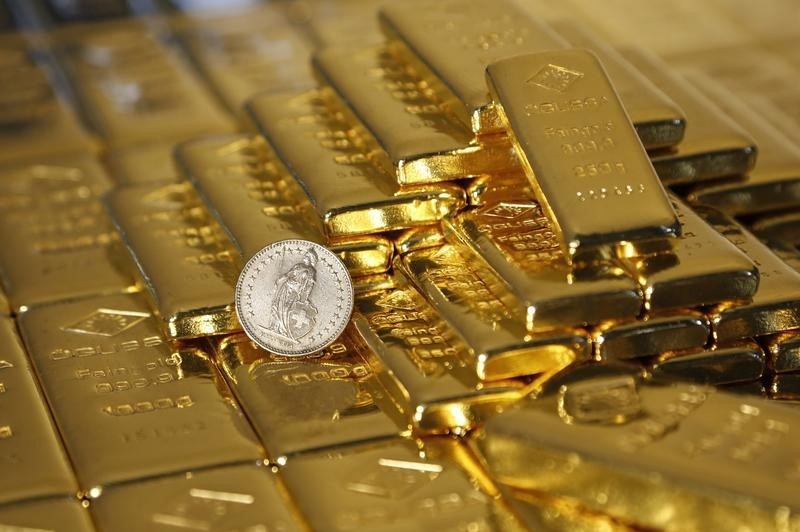Commodities
Gold prices dip as dollar rebounds in anticipation of Fed minutes


© Reuters.
Investing.com– Gold prices fell in Asian trade on Wednesday, relinquishing a measure of recent gains as the dollar rebounded amid some uncertainty over the timing of the Federal Reserve’s interest rate cuts in 2024.
The yellow metal saw a strong run-up in the final few trading days of 2023, amid growing optimism that the Fed will begin cutting rates by as soon as March 2024. Spot gold was still trading within $100 of a record high hit at the beginning of December.
But markets appeared to be seeking more affirmation that the Fed will begin trimming rates early in 2024. This saw the yellow metal relinquish some recent gains, while the rebounded sharply from near five-month lows on Tuesday.
steadied at $2,064.16 an ounce, while expiring in February fell slightly to $2,072.40 an ounce by 00:04 ET (05:04 GMT). Both instruments lost about 0.3% on Tuesday.
Fed minutes, nonfarm payrolls awaited for more cues
Anticipation of the – which are due later in the day- kept markets on edge, as analysts warned that the minutes may not strike as dovish a chord as expected.
While the Fed signaled plans for rate cuts in 2024, Chair Jerome Powell provided scant cues on the timing or scale of the rate cuts.
Several Fed officials had also pushed back against expectations for early rate cuts in the aftermath of the December meeting, given that inflation and the labor market were still running relatively hot.
Still, the shows traders pricing in a nearly 70% chance of a 25 basis point rate cut in March 2024.
Expectations of early rate cuts had driven a stellar rally in financial markets through most of December, particularly in the stock market.
Gold had also logged a strong December rally, and may still have some more upward momentum in store. Lower interest rates bode well for the yellow metal, given that high yields push up the opportunity cost of investing in gold.
Wednesday’s minutes also come before key data due this Friday, which is expected to offer more cues on the labor market. A cooling labor market and softer inflation are the two main considerations for the Fed to begin trimming interest rates.
Copper down on fresh China worries
Among industrial metals, copper prices fell slightly on Wednesday, extending recent losses following weak economic data from top importer China.
expiring March fell 0.1% to $3.8652 a pound, pulling further away from a five-month high hit in late-December. Prices were also pressured by strength in the dollar.
Weakness in China was a main point of contention for copper markets, as a post-COVID economic rebound largely failed to materialize in 2023.
Markets were also awaiting U.S. data for December, which is due later on Wednesday.
Commodities
Oil prices rise; U.S. crude inventories plunge, Russia-Ukraine truce eyed
Commodities
India’s Reliance to stop buying Venezuelan oil over US tariffs, sources say
Commodities
Oil prices climb on Venezuela supply worries

 Forex3 years ago
Forex3 years agoForex Today: the dollar is gaining strength amid gloomy sentiment at the start of the Fed’s week

 Forex3 years ago
Forex3 years agoUnbiased review of Pocket Option broker

 Forex3 years ago
Forex3 years agoDollar to pound sterling exchange rate today: Pound plummeted to its lowest since 1985

 Forex3 years ago
Forex3 years agoHow is the Australian dollar doing today?

 Cryptocurrency3 years ago
Cryptocurrency3 years agoWhat happened in the crypto market – current events today

 World3 years ago
World3 years agoWhy are modern video games an art form?

 Commodities3 years ago
Commodities3 years agoCopper continues to fall in price on expectations of lower demand in China

 Economy3 years ago
Economy3 years agoCrude oil tankers double in price due to EU anti-Russian sanctions























